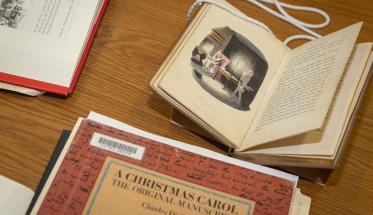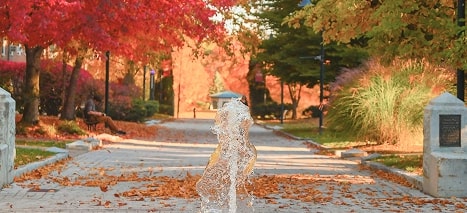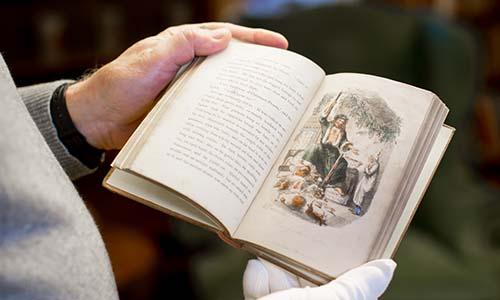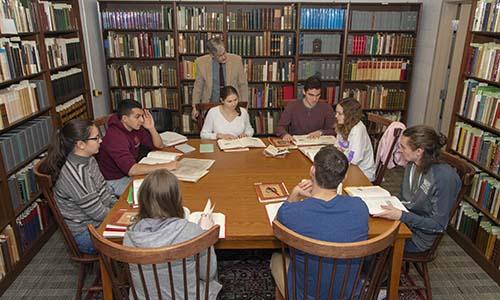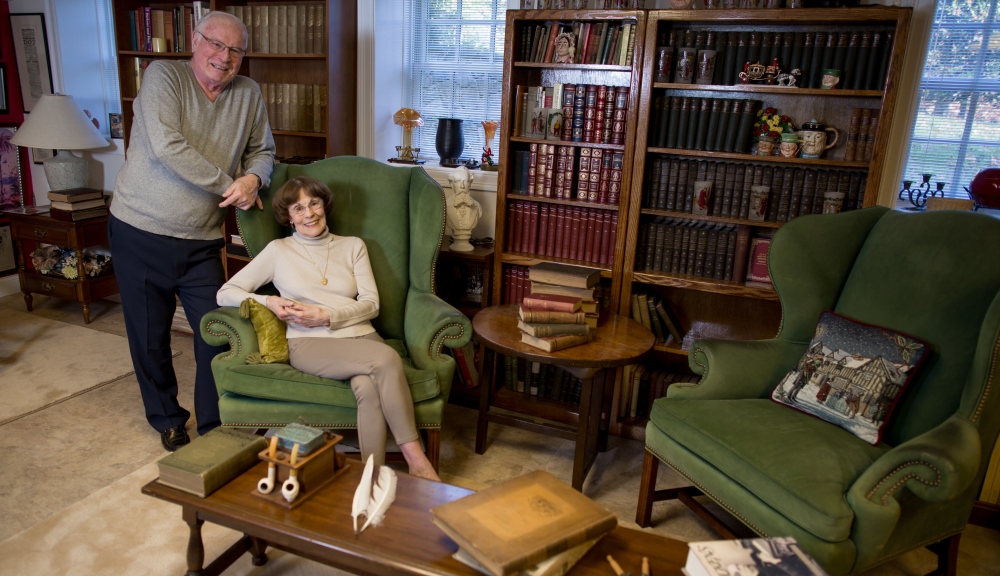For many readers, Charles Dickens’s classic holiday tale, A Christmas Carol, is their introduction to the literary great’s litany of stories.
It was for Daniel Ryan, who discovered the book as a high school student. Since that first encounter, he became an avid collector of Dickens’s published works and related materials. Now, more than 60 years after he began his collection, he and his wife, Alice, are donating it to WPI in hopes that it might inspire in others a love of all things Dickens.
Joel Brattin, WPI’s expert on Dickens, understands the transformative effect A Christmas Carol had on Dan Ryan, and on his own students. Each B-Term, as autumn gives way to the Christmas season, he teaches an Inquiry Seminar that focuses on A Christmas Carol.
During the seminar, Brattin, professor of English, and the small class (no more than 12 students) step into Victorian England and into the pages of the blockbuster first published on December 19, 1843.
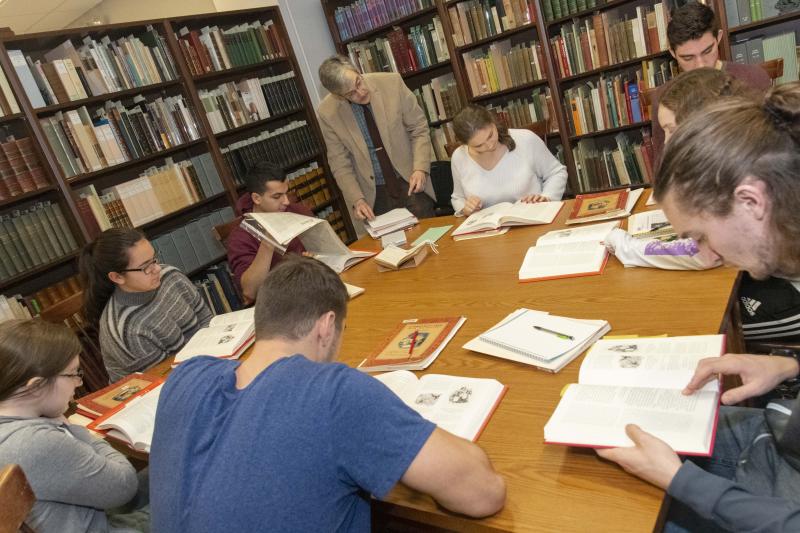
Professor Joel Brattin works with students from his Inquiry Seminar on A Christmas Carol.
Here, students examine a facsimile of Dickens’s original hand-written manuscript, examine a rare first edition of the book with its four hand-colored illustrations, and get a taste of how the book was written, published, performed by Dickens in a remarkable one-man show (which he brought to Worcester’s Mechanics Hall in 1868), and loved for more than 175 years.
Brattin says the author plays an important role in educating WPI’s students, who each fulfill a two-unit Humanities and Arts requirement culminating in an Inquiry Seminar. “A Christmas Carol affords an excellent opportunity for individual research, group work, and collaborative learning through oral and written expression,” says Brattin.
Jake Scarponi ’20 says talking about Dickens’s work is one of the best parts of the Inquiry Seminar.
“My favorite part about this course is the different topics Professor Brattin has us discuss,” says Scarponi, an aerospace engineering major. “We’ve shared our theses on the book, but we’ve also studied a lot of discrepancies between Dickens’s manuscript and the recent text we, ourselves, read, as well as the context under which A Christmas Carol was written and published.”
Other students, like Samantha Smith ’19, feel that Dickens’s famous tale remains well known because the lessons it teaches readers are applicable today.
“When the Ghost of Christmas Present visits Scrooge and says that ignorance is the downfall of humanity, that was an important lesson, both back then and now,” says Smith, a chemical engineering major. “It shows that when people educate themselves, they’re able to elevate society and prevent hatred from spreading.”
- By Jessica Messier
